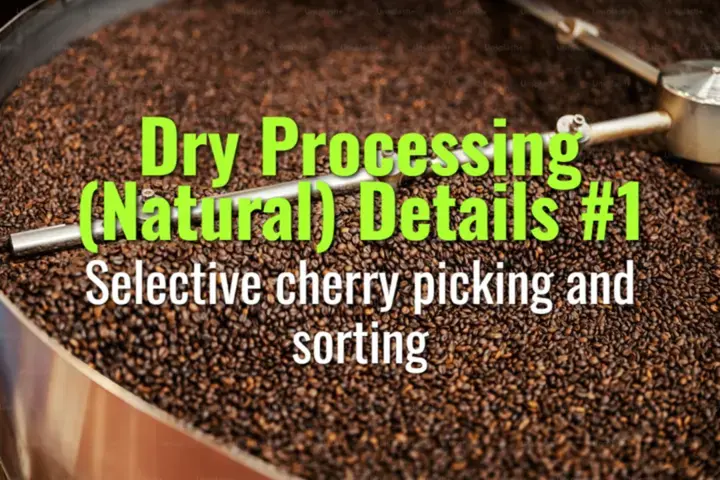Selective cherry picking and sorting
This topic explains the importance of selective cherry picking and sorting in natural (dry) coffee processing, and how these steps affect quality, consistency, and flavor.
- Coffee Basics Nerds
- 2 min read
Article 1 of 12 in Dry Processing (Natural) Details/

Why Selective Picking Matters
- In natural processing, cherries dry whole with skin and pulp intact.
- The starting fruit quality directly determines cup quality.
- Unripe or defective cherries introduce bitterness, astringency, or off-flavors.
Selective Cherry Picking
- Workers harvest only ripe, red (or yellow, depending on variety) cherries.
- Multiple passes are required since not all cherries ripen at once.
- Unripe (green) cherries → grassy, sour flavors.
- Overripe or fallen cherries → risk of mold, fermented or phenolic defects.
Sorting Methods
1. Hand Sorting
- Workers visually separate cherries at collection points.
- Removes insect-damaged, shriveled, or blackened cherries.
2. Flotation Sorting
- Cherries placed in water tanks.
- Dense, ripe cherries sink; defective, hollow, or insect-damaged cherries float and are discarded.
3. Additional Mechanical or Optical Sorting
- Some advanced mills use density sorters or optical scanners.
- Ensures uniform lots for specialty-grade naturals.
Quality Impacts
- Clean, consistent lots → higher cupping scores.
- Reduced risk of ferment/mold defects during long drying.
- Enhanced fruit-forward, winey flavors typical of naturals.
Challenges
- Selective picking is labor-intensive and costly.
- Requires training workers to recognize optimal ripeness.
- Sorting must be done quickly to avoid premature fermentation.
Lasting Importance
Selective cherry picking and sorting are foundational steps in natural processing. By ensuring only ripe, healthy cherries enter drying, producers secure better flavor clarity, reduce defects, and capture higher market value in specialty coffee.
You might also like:
- Tags:
- Lasting Importance
- Specialty Coffee
- Cup Quality
- Cupping Scores
- Flavor Clarity
- Specialty Grade
- Labor Intensive
- Natural Processing
- Market Value
- Fruit Forward
- Risk Mold
- Quality Impacts
- Reduced Risk
- Selective Picking
- Ripe Cherries
- Skin Pulp
- Ensures Uniform
- Better Flavor
- Hand Sorting
- Phenolic Defects
- Insect Damaged
- Sour Flavors
- Defective Cherries
- Bitterness Astringency
- Requires Training
- Flotation Sorting
- Cherries Dry